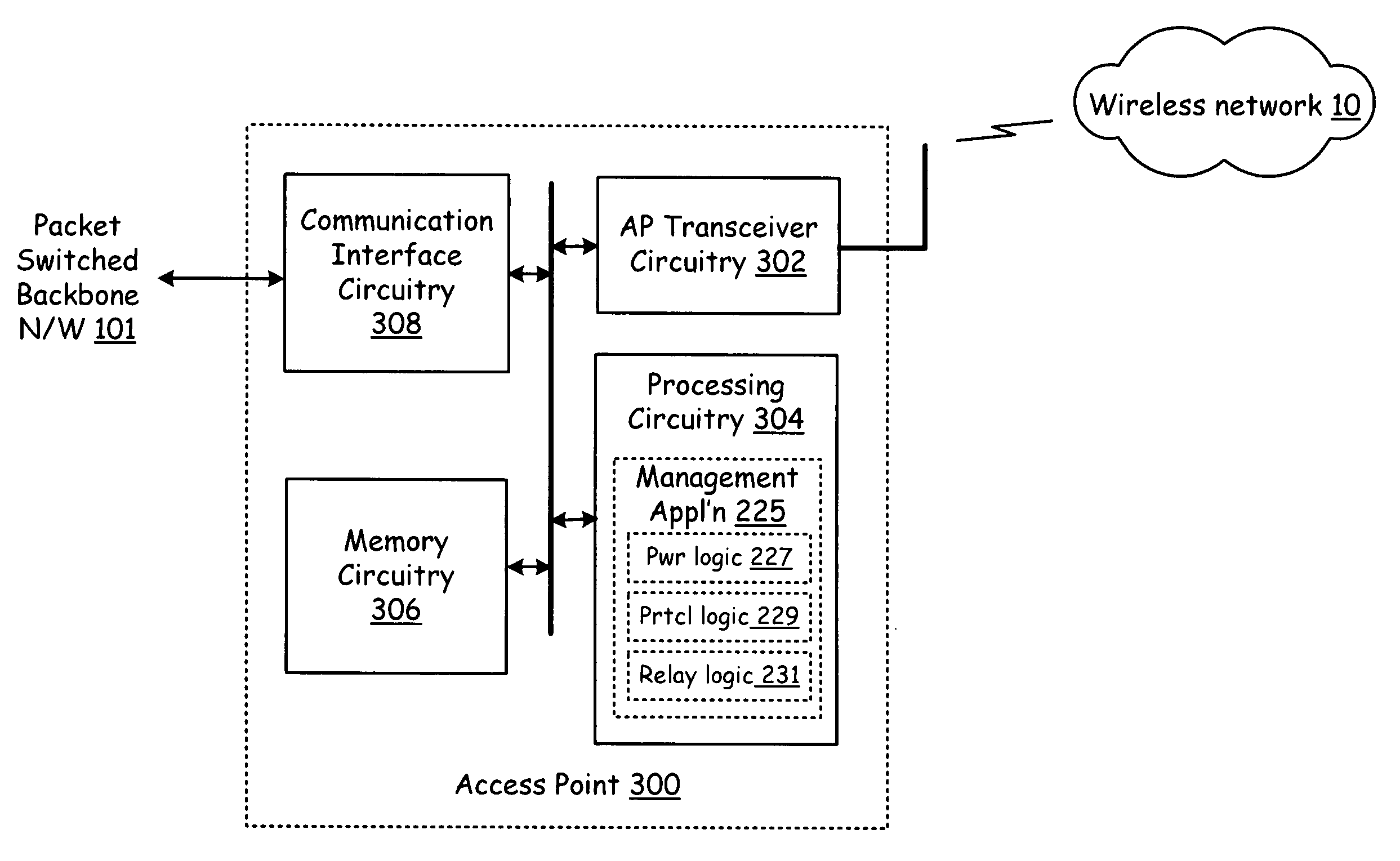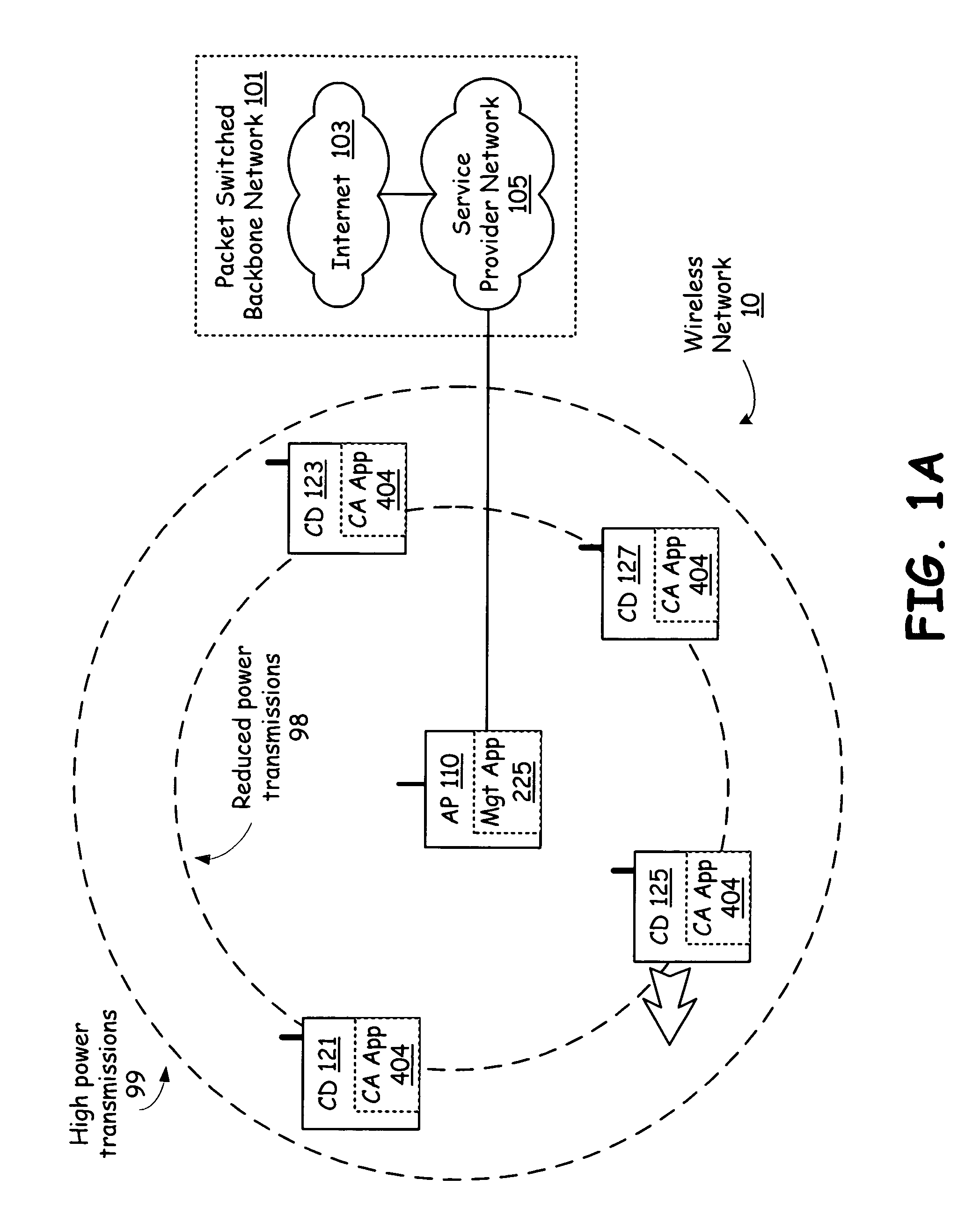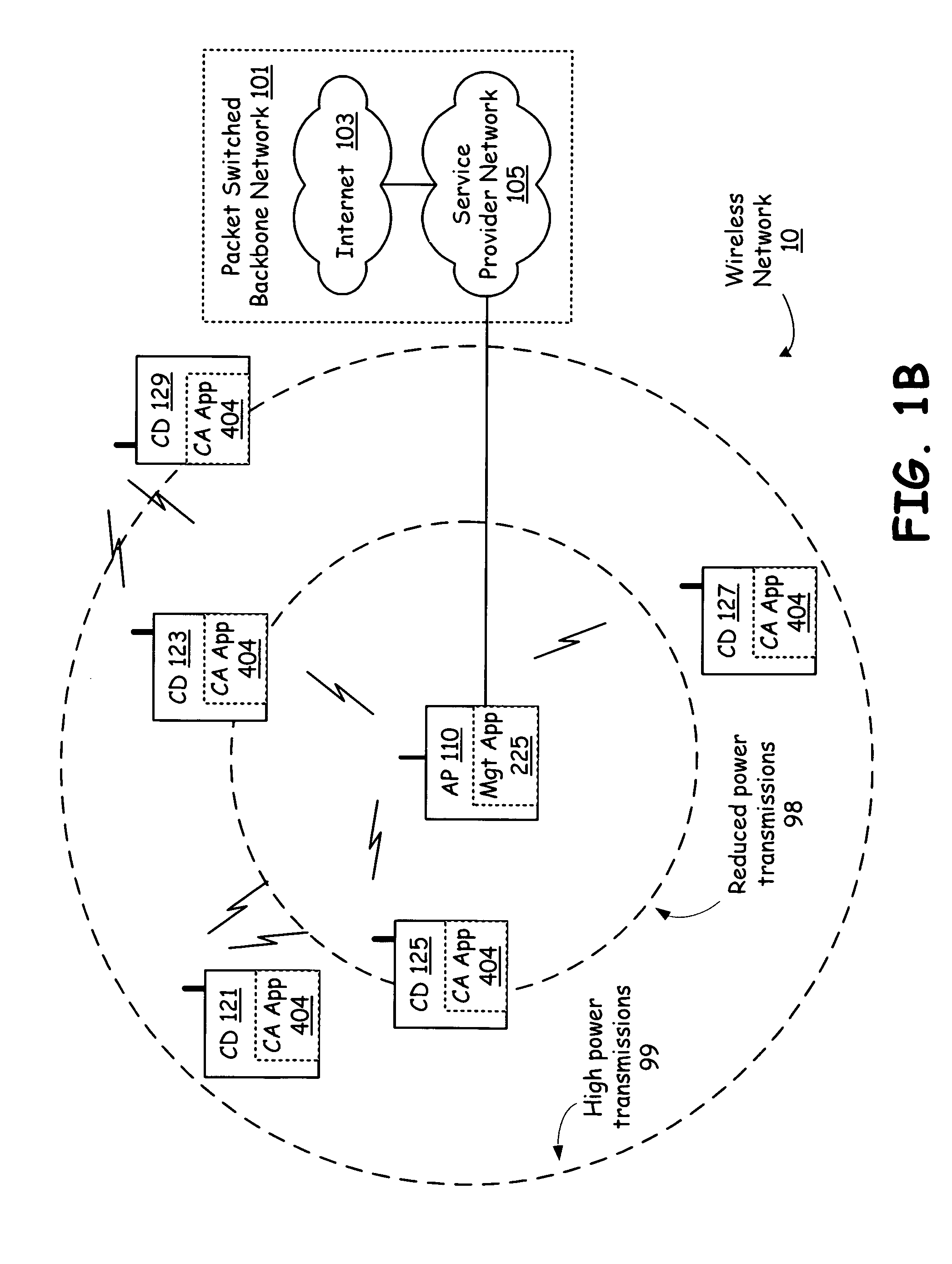Cell network using friendly relay communication exchanges
a cell network and relay technology, applied in the field of wireless communication systems, can solve the problems of data collision, transmission at too high a power, energy inefficiency,
- Summary
- Abstract
- Description
- Claims
- Application Information
AI Technical Summary
Problems solved by technology
Method used
Image
Examples
Embodiment Construction
[0035]FIG. 1A is a system diagram illustrating a wireless network in accordance with an embodiment of the present invention. A wireless network 10 includes an access point 110 that is coupled to packet switched backbone network 101. The access point 110 manages communication flow destined for and originating from each of client devices 121, 123, 125 and 127 over a wireless network 10. Via the access point 110, each of the client devices 121, 123, 125 and 127 can access service provider network 105 and Internet 103 to, for example, surf web-sites, download audio and / or video programming, send and receive messages such as text messages, voice message and multimedia messages, access broadcast, stored or streaming audio, video or other multimedia content, play games, send and receive telephone calls, and perform any other activities, provided directly by access point 110 or indirectly through packet switched backbone network 101.
[0036]The access point 110 is capable of transmitting high...
PUM
 Login to View More
Login to View More Abstract
Description
Claims
Application Information
 Login to View More
Login to View More - R&D
- Intellectual Property
- Life Sciences
- Materials
- Tech Scout
- Unparalleled Data Quality
- Higher Quality Content
- 60% Fewer Hallucinations
Browse by: Latest US Patents, China's latest patents, Technical Efficacy Thesaurus, Application Domain, Technology Topic, Popular Technical Reports.
© 2025 PatSnap. All rights reserved.Legal|Privacy policy|Modern Slavery Act Transparency Statement|Sitemap|About US| Contact US: help@patsnap.com



